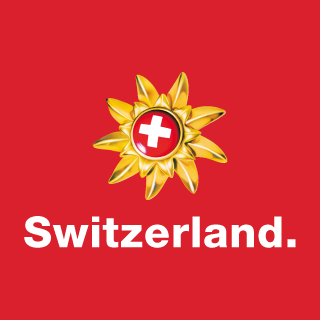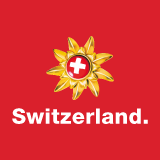The arts scene - yesterday and today
What is typically Swiss about Swiss art? Not very much, in actual fact. But a closer look does reveal certain special features. Time and again, typically Swiss modesty is conspicuous.
Switzerland is home to more visual artists than virtually any other country of comparable size. If we are to believe the relevant ranking lists such as the Art Barometer, Switzerland numbers among the world's leading countries as far as art is concerned. Veterans such as Dieter Roth and Jean Tinguely certainly play their part in this achievement. More recent representatives who are also known internationally include the Fischli/Weiss duo, Pipilotti Rist, Roman Signer, Ugo Rondinone, Olaf Breuning, Urs Fischer, John Armleder, Olivier Mosset, Jean-Fréderic Schnyder, Franz Gertsch, Helmut Federle, Fabrice Gygi and Thomas Hirschhorn.
International acclaim
Swiss artists were able establish themselves on the international scene at an early stage. In the 18th century, for instance, Johann Heinrich Füssli of Zurich attracted attention in London with his grotesque and fantastic pictures. He was followed in the 19th century by other painters such as Arnold Böcklin, Albert Anker and Ferdinand Hodler, and at the start of the 20th century by the sculptor Alberto Giacometti. And thanks to the Dadaists, Zurich and the Cabaret Voltaire became a source of major impetus for international artistic activity from 1916 onwards.Constructivism: a special case
Works by Hans Arp and Sophie Taeuber-Arp from 1917 onwards, and planar compositions by Paul Klee and Johannes Itten marked the start of constructive art in Switzerland. During the second world war, Switzerland ultimately became a kind of European refuge for avant-garde constructivists, centering on figures such as Max Bill and Richard Paul Lohse. While the end of the war found Europe distancing itself from everything that existed in the pre-war era, the constructivist movement continued to flourish in Switzerland. Its strictly mathematical thinking exerted a particular influence on design and graphic art, with a corresponding impact on Switzerland's image abroad.Iron sculpture – a speciality
The 1950s saw the emergence of the first exponents of iron sculpture – an art form that is still regarded as typically Swiss today. Outstanding representatives of this genre at international level include Robert Müller, followed also by Jean Tinguely and Bernehard Luginbül as well as Daniel Spoerri and Dieter Roth.Catching up with European events
Towards the end of the 1950s, when works by "concrete" artists such as Cuno Amiet, Max Gubler and Ernst Morgenthaler were still regarded as genuine modernist art, young artists such as Franz Fedier, Rolf Iseli and Matias Spescha represented this country at the Biennales – with their art which was, in the broadest sense, informal. Switzerland caught up with the rest of Europe again. The pop-art phenomenon then emerged in Switzerland too – albeit very briefly. For artists such as Franz Gertsch, Markus Raetz, Max Matter and Urs Lüthi, the engagement with pop was particularly important at the start of their careers.Swiss inwardness
A specifically Swiss trend emerged in the early 1970s in the form of a strong interest in inner worlds, minor masterpieces and drawing – artists shied away from large-scale gestures. Well-known artists who created small, meditative pencil drawings include Ilse Weber, Markus Raetz and Hugo Suter.The wild eighties
After the sensitive seventies, the neo-expressionists burst onto the scene with exhibitions such as "Saus und Braus" ("Fat of the Land") and "Stiller Nachmittag" ("Quiet Afternoon"). Miriam Cahn, Martin Disler, Peter Emch, Leiko Ikemura, Josef Felix Müller, Klaudia Schifferle and Anselm Stalder numbered among the representatives of this movement whose works can be interpreted as a reaction to standardised value scales based on bourgeois concepts. At the same time, Fischli/Weiss presented "Plötzlich diese Übersicht" ("Suddenly, This Overview"). Alongside them, there were still some artists whose perspective went no further than the end of their pencils, so to speak – although even this perspective now embraced different media; examples include Hannah Villiger, Anna Winteler, Claudia and Julia Müller and Zilla Leutenegger.New exuberance
In the 1990s, the inwardness of past years was transformed into exuberance. If presented intelligently, fun was suddenly allowed. "Lauf der Dinge" ("In the Run of Things") by Fischli/Weiss more or less initiated the abandonment of any false respect for artistic production. Roman Signer made his breakthrough with a work that took him 30 years to complete. Carefree self-confidence is also discernible in the works of artists such as Pipilotti Rist, Daniel Buetti and Ugo Rondinone, together with those of Costa Vece and Lori Hersberger.Suddenly, confusion reigns ...
More than ever, today's contemporary art also includes interventions that infiltrate society and have no need of any institutional framework. The boundaries between between art and other forms are becoming increasingly blurred. In addition, there are the inroads made by new media and the associated slowdown of internationalism – phenomena that exist side-by-side with a highly varied range of presentation forms in museums and international galleries or at biennales and art fairs. All of these developments have transformed contemporary art into a realm which is difficult to comprehend, with large numbers of players. But this makes a foray into contemporary art even more exciting!Further links
List of Swiss painters and graphic artists SIKART - Lexicon of Swiss Art, published by the Swiss Institute for Art Research Artnet magazine on the Swiss art scene Sources

